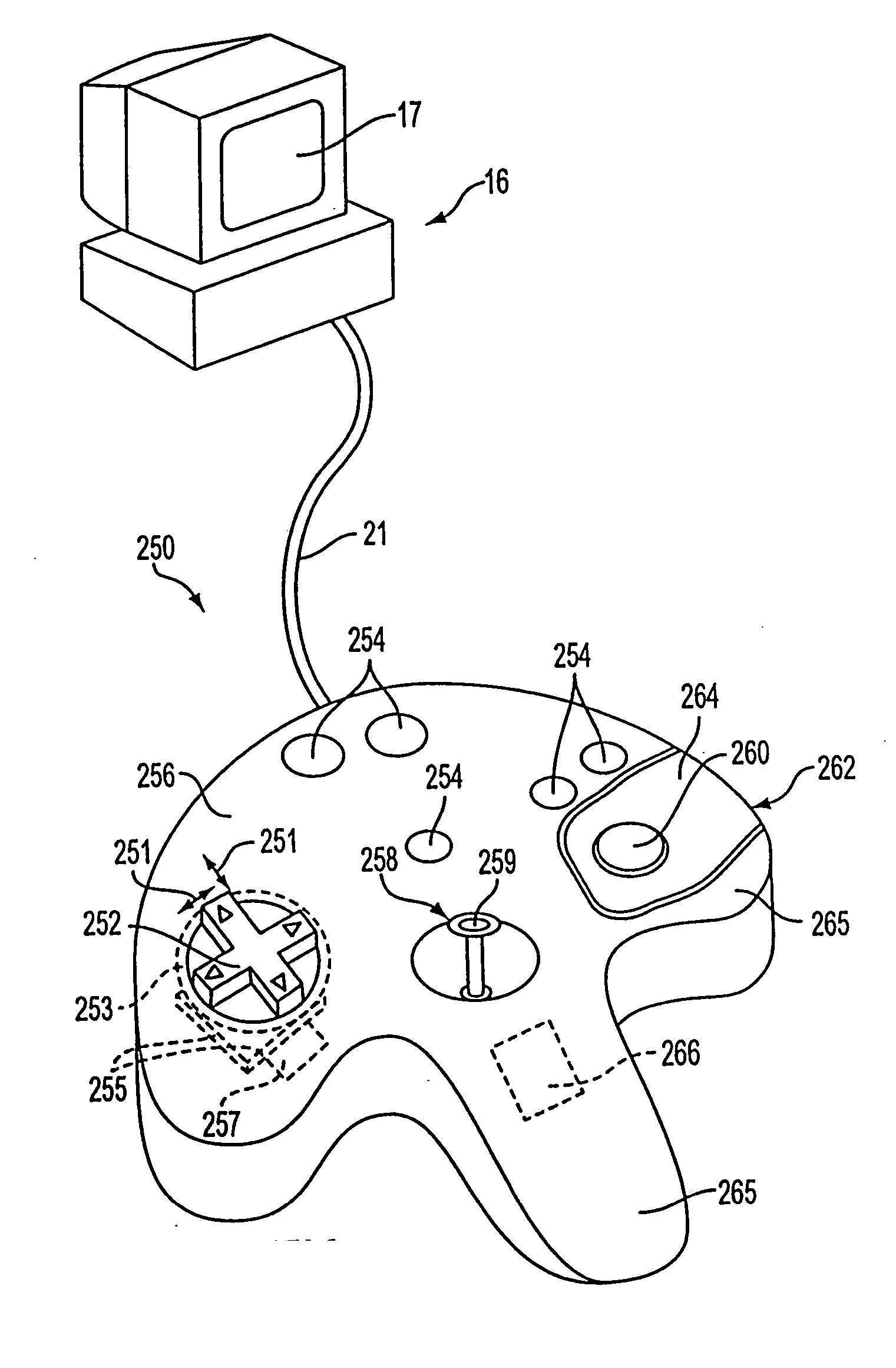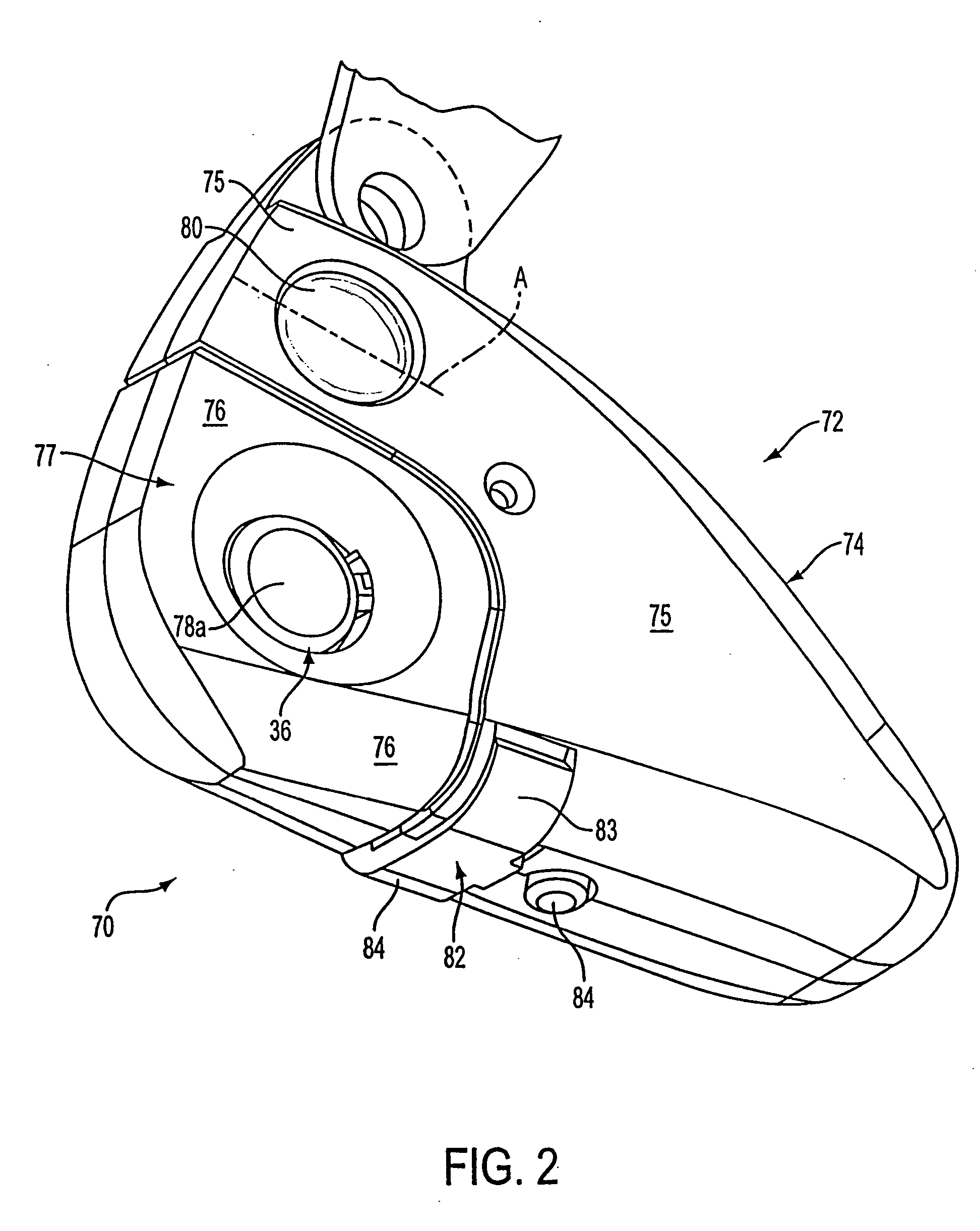Haptic feedback device with button forces
a haptic feedback and button technology, applied in the field of haptic feedback devices with button forces, can solve the problems of limited haptic feedback provided to the operator concerning the interactions of the slave with its environment, the type of master requires considerable operator training, and the control of the slave is not intuitive, etc., to achieve detailed and accurate control, easy operation, and easy control of objects
- Summary
- Abstract
- Description
- Claims
- Application Information
AI Technical Summary
Benefits of technology
Problems solved by technology
Method used
Image
Examples
embodiment 120
[0060]FIG. 4 is a perspective view of a second, preferred embodiment 120 of the controller 70 of FIG. 2, including both the moveable portion 76 of the housing and the force feedback gripper control 36. A portion of the housing 74 is removed to show the mechanism within controller 70.
[0061] The mechanism for moving the moveable portion 76 of the housing is substantially the same as described with reference to FIG. 3. The moveable portion 76 is moveably coupled to the fixed portion 75 of housing 74 by leaf springs 98 and 92, which are provided at a 90-degree relation to each other for support of the moveable portion. Actuator 102 outputs forces on leaf spring member 98, which moves moveable portion 76 relative to fixed portion 75. In addition, this causes movement of moveable portion 76 relative to the gripper mechanism 36, including finger pads 78 and gripper members 130. As in the embodiment of FIG. 3, an oscillating force is preferably output to cause a vibration of moveable portio...
embodiment 180
[0074]FIG. 7 is a perspective view of a different embodiment 180 of the controller 70 of FIG. 2, in which the entire controller 70 is used as a vibrotactile device or “shaker.” Controller 180 includes a roller 80 and buttons 82 and 84, as described above. Moveable portion 76 and leaf springs 98 and 92 can also be included, although they are not utilized for any particular function separate from the rest of housing 74, so that the moveable portion 76 can be made unitary with the housing 74 if desired.
[0075] Actuator 182 is included to provide vibrotactile feedback to the housing 74. One portion 184 of actuator 182 is grounded to housing 74, and a second portion or bobbin 186 moves with respect to the grounded portion 184. For example, a voice coil actuator similar to the actuator 150 described with reference to FIG. 6 can be used. In the described embodiment, the bobbin 186 is coupled to two leaf springs 188 and 190, and the leaf springs are in turn coupled to the housing 74. In oper...
embodiment 150
[0080]FIG. 9a is schematic diagram of the linkage mechanism 204 and actuator of the gripper control 200 of FIG. 8. The linkage mechanism of FIG. 9a amplifies motion of the gripper pads relative to actuator 124. A force F.sub.A is applied by the user when pushing down on the gripper portions 202a and 202b. For explanatory purposes, only one of the gripper pads 202 and gripper members 216 is shown in FIG. 9a. Gripper member 216 is coupled to a gripper portion 202 and is a lever arm that pivots about a coupling 215. The gripper member 216 is also rotatably coupled to a member 218 at the coupling 215, and the member 218 is rotatably coupled to a grounded member 220. Gripper member 216 is coupled to a linear-moving member 222 at a location on member 216 spaced from coupling 215. Member 222 is coupled to a moving portion of an actuator 226 which moves in a linear degree of freedom. A non-moving portion of the actuator 226 is grounded. For example, the actuator embodiment 150 of FIG. 6 can...
PUM
 Login to View More
Login to View More Abstract
Description
Claims
Application Information
 Login to View More
Login to View More - R&D
- Intellectual Property
- Life Sciences
- Materials
- Tech Scout
- Unparalleled Data Quality
- Higher Quality Content
- 60% Fewer Hallucinations
Browse by: Latest US Patents, China's latest patents, Technical Efficacy Thesaurus, Application Domain, Technology Topic, Popular Technical Reports.
© 2025 PatSnap. All rights reserved.Legal|Privacy policy|Modern Slavery Act Transparency Statement|Sitemap|About US| Contact US: help@patsnap.com



